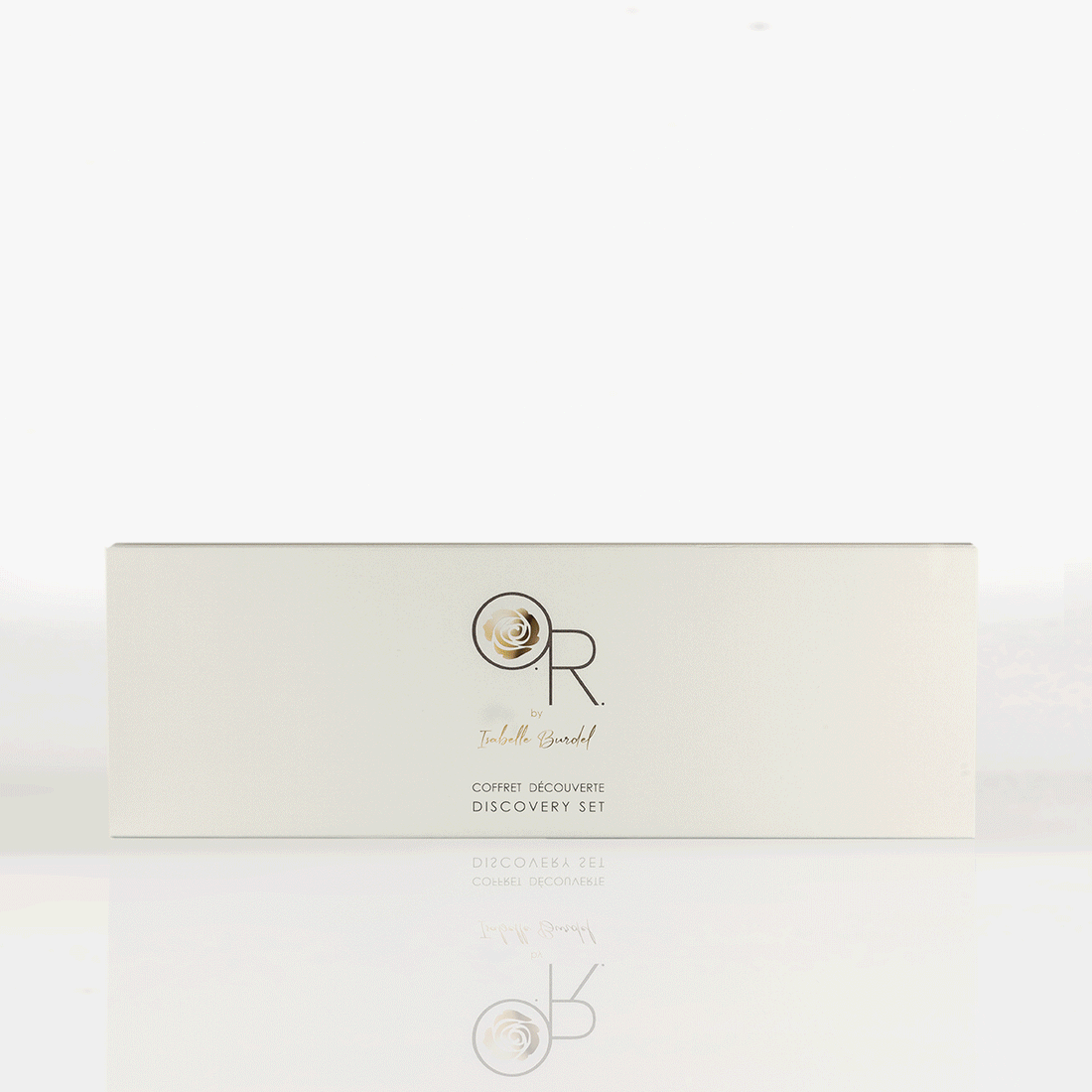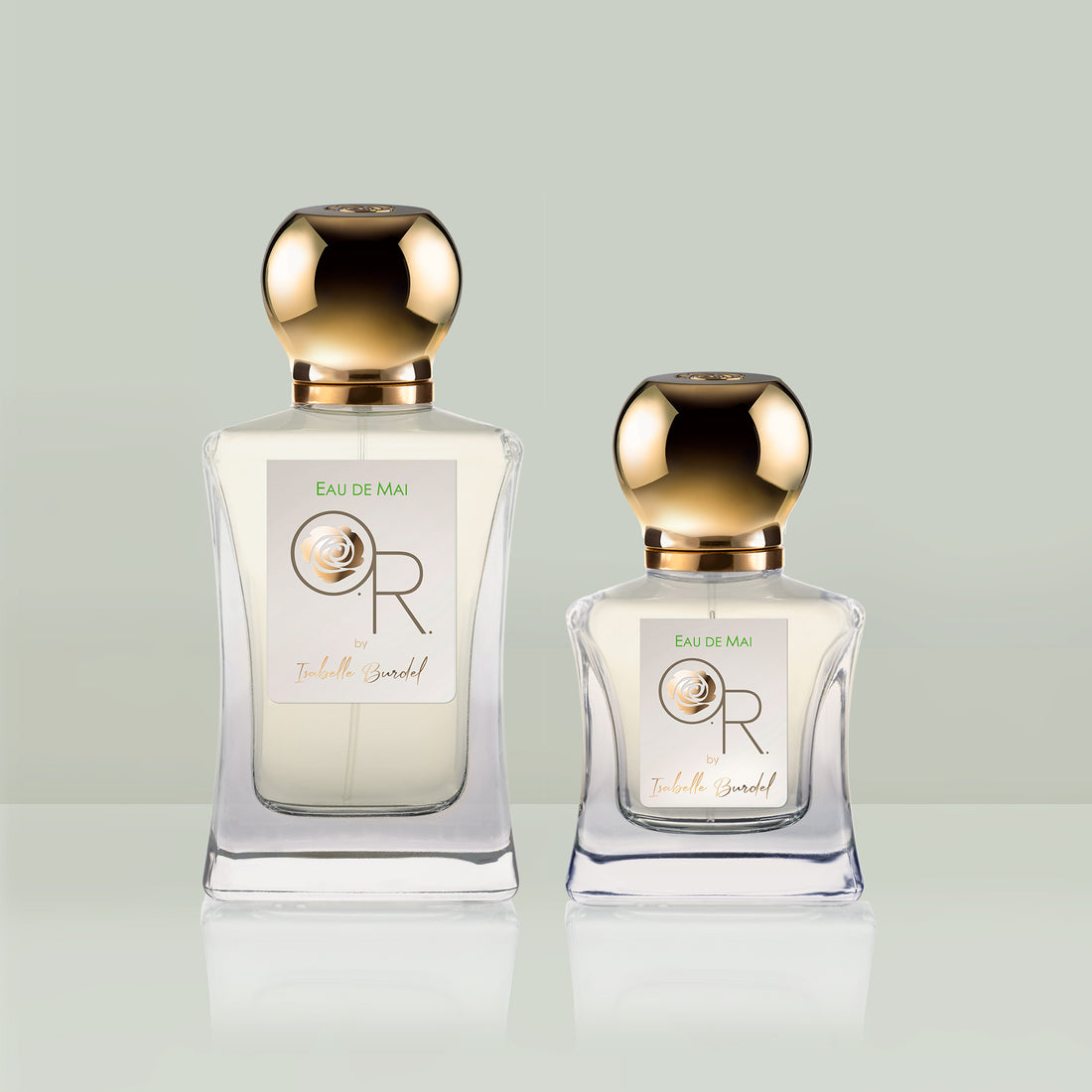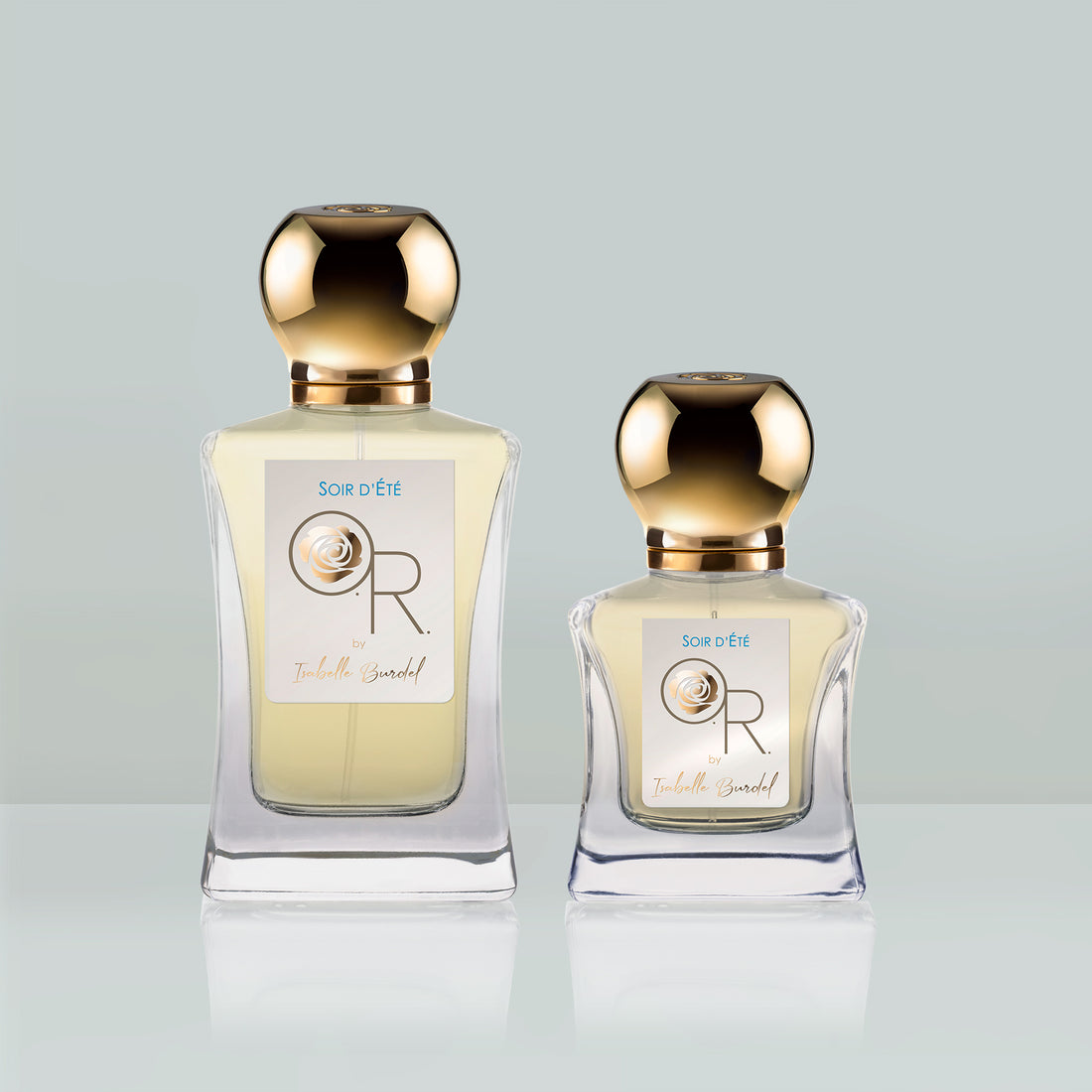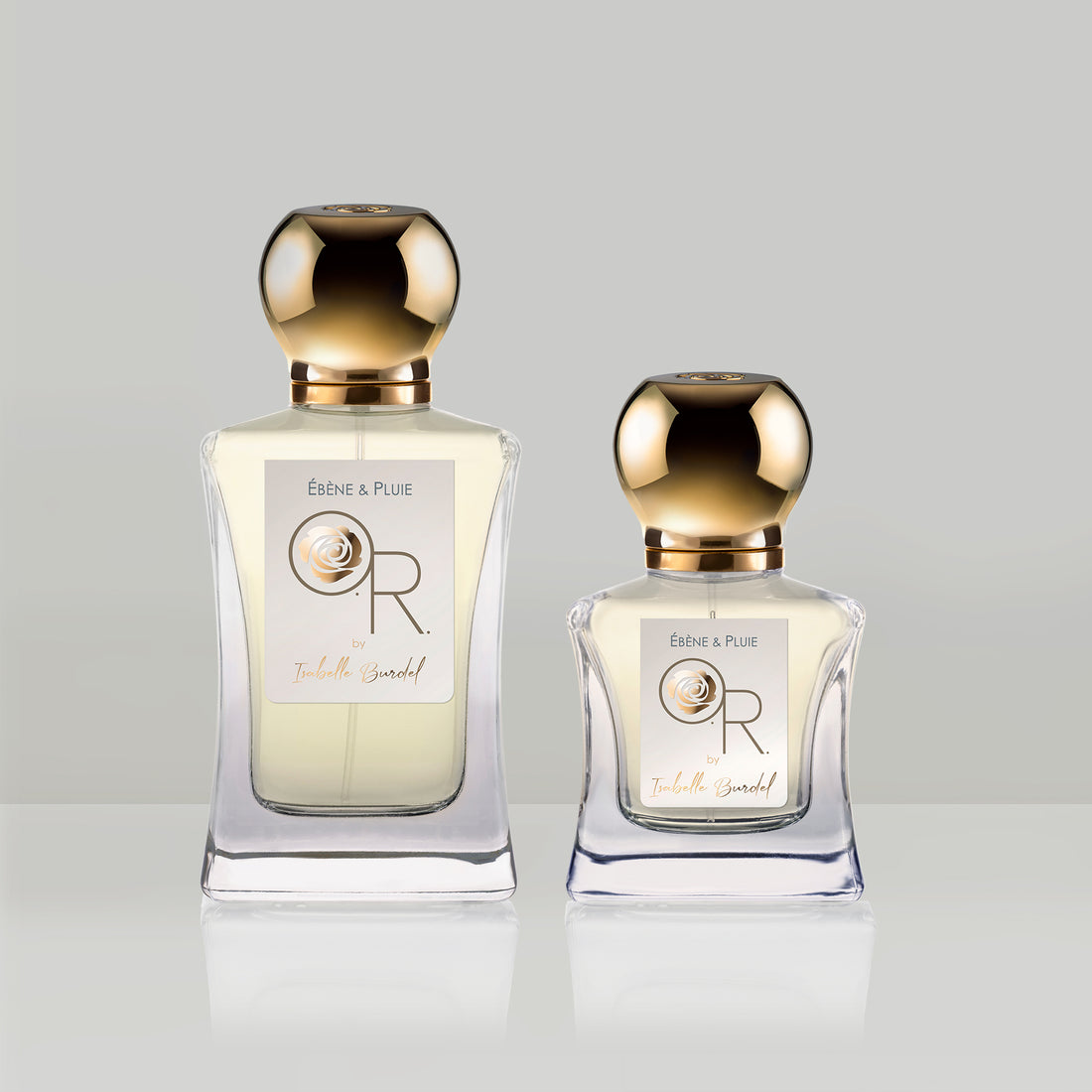Paris, the City of Light, has always been a source of dreams, and its association with the world of perfume is frequent, if not omnipresent, in the collective unconscious.
Paris represents in many ways the essence of French culture, a combination of its history, architecture, arts, and people.
The aura of the capital, shaped by its historical and cultural richness, is such that it has even given birth to a modern mythical creature—a woman who embodies intelligent, natural, and elusive beauty: the Parisian woman!
Perfume, on the other hand, evokes a variety of images, from luxury to travel, from sensuality to memory. It belongs to the invisible realm—you can smell a scent, but you cannot see it—thus, it is tied to the unconscious.
The combination of these two concepts—Paris and perfume—has long given birth to magnificent creations that have stood the test of time. The first modern perfumers at the very beginning of the 20th century (Guerlain, Caron, Coty) and the great fashion designers of the 1920s and 1930s (Chanel, Lanvin, Rochas) all share the fact that they lived in and were inspired by Paris, with their perfumes ultimately acting as extensions of the spirit of the city: elegance, occasional nonchalance, cultural activity, social upheavals, and reflections of the aspirations of its people.
Paris, perfume... The City of Light with its evident beauty, and the invisible space with its complex refinement—these are ultimately two seemingly contradictory concepts brought together by scent and the imagination it can materialize.
New perfume capital : Paris
While Grasse is often considered the capital of perfume, Paris undeniably has strong arguments to claim this title today.
Where Grasse can be seen as the historical cradle of perfume in France—thanks to its heritage of tanners, leather perfumers, and, finally, growers of fragrant plants—Paris can now boast of being its showcase. Indeed, both residents and visitors now face a plethora of fragrances, from French or international brands, as diverse as the colors of the olfactory spectrum.
Perfume as a finished product—rather than as an art or craft—has truly conquered Paris; department stores are overflowing with brands, big and small, and numerous retail outlets offer a more refined selection for seasoned enthusiasts.
But where does this intimate relationship between Paris and perfume come from? Let’s trace it back to its origins…
The beginnings of perfume in Paris
In the Middle Ages, perfume was perceived as a hygienic accessory that protected against diseases, particularly during various plague outbreaks in Europe. Over the following centuries, as medicine advanced, it gradually lost this connotation and became an object of pleasure or beauty.
The glove-making industry, stemming from leather craftsmanship, was booming, and Parisians of the aristocracy loved to wear these marks of social distinction. However, gloves—and their entire manufacturing process—had the drawback of being malodorous. Thus, in Grasse, they took advantage of the temperate and airy climate to extract the fragrance from the surrounding plants. Glove manufacturers then found the solution to deodorize their factories and final product. From now on, well-made gloves would be scented.
The trend quickly spread to Paris, and perfume became the invisible companion of ladies and gentlemen with elegant leather. From the 17th century onward, French perfume became renowned for its quality, but it was still an inseparable concept from the glove-making trade.
Things changed in 1724, when perfumers created their own guild, meaning that their profession was now separate from that of glovemakers. Consequently, perfume began to live on its own, particularly in Paris.
The first reputable Parisian perfumers bore names like Oriza L. Legrand (1720), L.T. Piver (1774), Houbigant (1775), and Lubin (1798). All of them had the distinction of being born before the 19th century and still exist today. They were the perfumers of the various royal courts and managed to hold their ground during the turmoil of the French Revolution.
The early 19th century was marked by the repeated alternation between monarchical power (Louis XVIII, Charles X, and Louis-Philippe I) and imperial power (Napoleon Bonaparte and later his son), while perfume in Paris found its place among an aristocratic or bourgeois public. In 1828, Pierre-François-Pascal Guerlain founded the famous house that bears his name by opening a boutique on Rue de Rivoli in Paris.
The urban development projects of Baron Haussmann greatly enhanced the prestigious aura of Paris, and perfume in Paris benefited from this. Parisian perfumers became part of the collective unconscious, as evidenced by the classic novels of the 19th century (César Birotteau by Balzac, or À rebours by Huysmans), and entered French culture, which in turn radiated internationally.
The perfume revolution in Paris
Things truly changed at the end of the 19th century when technological advancements led to the emergence of chemistry as a modern science. From then on, natural essences used in perfumes (rose, jasmine, violet leaf) were joined by synthetic molecules—either isolated from nature or invented in laboratories. This marked the birth of modern perfumery as we know it today, and it was a revolution because, for the first time, perfume moved away from merely replicating nature to creating something entirely new and abstract.
The first fragrance to exploit these modern advancements was Fougère Royale by Houbigant. Its aromas of bergamot, lavender, and geranium were enhanced by a molecule discovered shortly before, coumarin, which has an almond and hay-like scent. With its woody base (vetiver), it constituted an entirely new scent, so much so that it created a whole new olfactory family, the fougères. In Paris, this fragrance was a huge success and paved the way for other creations, such as Guerlain's Jicky, which followed a few years later with a similar structure but with a more animalistic base (civet).
The modernization of the perfume industry through the use of synthetic molecules allowed for more than just reproducing nature; abstraction thus enabled luxury to have its own scent. Paris and perfume now enjoyed an ideal partnership.
The early 20th century saw the emergence of new perfumers in Paris who would soon become industry heavyweights. Caron in 1904, and Coty the same year, presented serious competition to traditional perfumers such as Guerlain or Lubin.
During the Belle Époque, the perfumes that became popular in Paris included La Rose Jacqueminot (Coty - 1904), Après l’Ondée (Guerlain - 1906), Ambre Antique (Coty - 1905), L’Origan (Coty - 1905), Narcisse Noir (Caron - 1911), and L’Heure Bleue (Guerlain - 1912). The First World War (1914 - 1918) put a halt to these carefree years.
After the Great War, men returning from the front found a society that had changed significantly. Women had started working to fill the void left by men, and their attitudes reflected this shift. In Paris, this change in mentality did not go unnoticed by Félicie Wanpouille, partner of Ernest Daltroff at Caron. She suggested repositioning the latest masculine fragrance from the house, Le Tabac Blond, which had just been launched, as a perfume for Parisian women who smoked cigarettes. The success was immediate: with its blend of carnation, wood, and leather, Le Tabac Blond evoked the blond tobacco smoked by the flappers of the Roaring Twenties and established itself as the first "leather" fragrance in perfumery. The capital attracted Americans, led by Fitzgerald and Hemingway, and the love affair between Paris and perfume experienced its most beautiful years.
High fashion and perfume in Paris
In the early 1920s, perfume was still the domain of what were called perfumers' houses—companies specializing in fragrance. It was then that a couturière, Gabrielle Chanel, who was gaining success in Paris, decided to launch a perfume under her name, a fragrance that Paris and its fashion enthusiasts would quickly adore. Thus, perfumer Ernest Beaux created N°5 for Chanel, launched in 1921. Its floral bouquet (jasmine, ylang-ylang, rose) was propelled by the sharp metallic bite of aldehydes, synthetic molecules that added a distinctly modern sheen to this opulent composition. Over the years, N°5 would become simply the most famous perfume in the world.
In its wake, many couturiers (Lanvin, Rochas, Balenciaga, Balmain, Christian Dior...) would later launch their own perfumes in Paris, a combination that has become the norm today.
In 1925, Guerlain presented, at the International Exposition of Decorative Arts in Paris, the perfume Shalimar, a creation inspired by India, particularly the Taj Mahal, built by a Mughal emperor for his deceased wife.
Until the late 1930s, the perfume industry in Paris thrived despite the looming turmoil. World War II, of course, dealt a severe blow to the market, but things picked up again after the late 1940s. Elysées 64-83 (Balmain, 1946) is a prime example of the now inseparable link between perfume and Paris.
In 1947, the latest fashionable couturier, Christian Dior, organized his first fashion show in Paris and called on designer Paul Vacher (Lanvin, Le Galion) to scent the event. That same year, with the help of his childhood friend Serge Heftler-Louiche, who would become the first director of Dior perfumes, Paul Vacher created Miss Dior, a green chypre that would achieve great olfactory success in Paris.
The post-war boom years allowed for the establishment of a true perfume industry, where new commercial sciences such as marketing emerged. From this period on, Paris became a claimed inspiration for perfume.
In 1983, another couturier, Yves Saint Laurent, named his perfume Paris, through a comforting blend of rose and violet.
Perfume and Paris today
Since then, the examples of Paris's prestige in the world of perfume are countless, with innumerable brands placing the name of the capital under their logo—whether they are based there or not.
Isabelle Burdel, founder of the brand Olfactory Revelation, spent a significant part of her career in Paris, working as a perfumer for luxury houses. There, she learned the secrets of perfume formulation, but she also experienced and absorbed the vibrant atmosphere of the capital. This certain "couture" elegance that she adopted, then took with her to Grasse, where she now works, and finally restored in an exceptional collection called "OR Parfums" (Olfactory Revelation), as if awakening a beauty that was already present within us.
The freshness of Eau de Mai, the minerality of Ebène et Pluie, the irresistible soft cocoon of Blanc Absolu, the creamy luminosity of Tubéreuse Solaire, the sophistication of Chant de Roses, or the firm caress of Iris Velours… Each fragrance in her collection has the potential to become an olfactory signature, announcing or prolonging a presence.
For that is ultimately what Paris offers to perfume: an invisible presence and an eternal source of inspiration.






